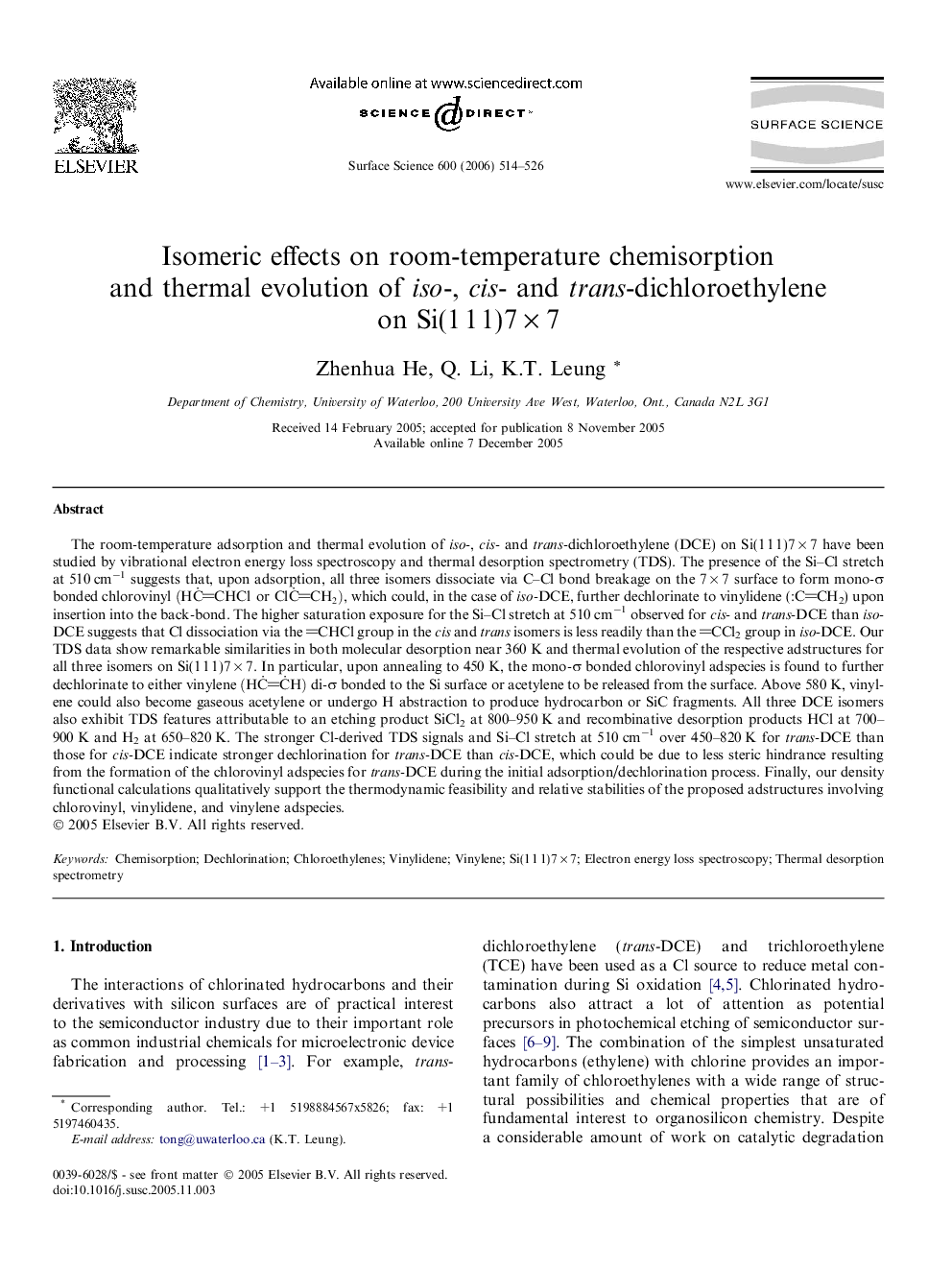| کد مقاله | کد نشریه | سال انتشار | مقاله انگلیسی | نسخه تمام متن |
|---|---|---|---|---|
| 5426854 | 1395910 | 2006 | 13 صفحه PDF | دانلود رایگان |

The room-temperature adsorption and thermal evolution of iso-, cis- and trans-dichloroethylene (DCE) on Si(1Â 1Â 1)7Â ÃÂ 7 have been studied by vibrational electron energy loss spectroscopy and thermal desorption spectrometry (TDS). The presence of the Si-Cl stretch at 510Â cmâ1 suggests that, upon adsorption, all three isomers dissociate via C-Cl bond breakage on the 7Â ÃÂ 7 surface to form mono-Ï bonded chlorovinyl (HCËCHClorClCËCH2), which could, in the case of iso-DCE, further dechlorinate to vinylidene (:CCH2) upon insertion into the back-bond. The higher saturation exposure for the Si-Cl stretch at 510Â cmâ1 observed for cis- and trans-DCE than iso-DCE suggests that Cl dissociation via the CHCl group in the cis and trans isomers is less readily than the CCl2 group in iso-DCE. Our TDS data show remarkable similarities in both molecular desorption near 360Â K and thermal evolution of the respective adstructures for all three isomers on Si(1Â 1Â 1)7Â ÃÂ 7. In particular, upon annealing to 450Â K, the mono-Ï bonded chlorovinyl adspecies is found to further dechlorinate to either vinylene (HCËCËH) di-Ï bonded to the Si surface or acetylene to be released from the surface. Above 580Â K, vinylene could also become gaseous acetylene or undergo H abstraction to produce hydrocarbon or SiC fragments. All three DCE isomers also exhibit TDS features attributable to an etching product SiCl2 at 800-950Â K and recombinative desorption products HCl at 700-900Â K and H2 at 650-820Â K. The stronger Cl-derived TDS signals and Si-Cl stretch at 510Â cmâ1 over 450-820Â K for trans-DCE than those for cis-DCE indicate stronger dechlorination for trans-DCE than cis-DCE, which could be due to less steric hindrance resulting from the formation of the chlorovinyl adspecies for trans-DCE during the initial adsorption/dechlorination process. Finally, our density functional calculations qualitatively support the thermodynamic feasibility and relative stabilities of the proposed adstructures involving chlorovinyl, vinylidene, and vinylene adspecies.
Journal: Surface Science - Volume 600, Issue 3, 1 February 2006, Pages 514-526